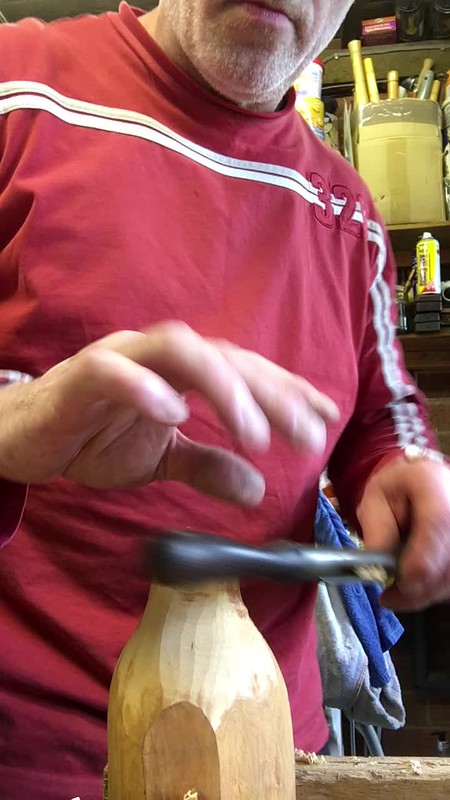El Barto makes an interesting point.
It's not surprising that he finds a difference between a Boggs style shave and his Mursell, because they're radically different tools. The Mursell is a classic wooden bodied, low angle spokeshave with the bevel on top. The Boggs has a bevel down iron that's bedded at about the standard 45 degrees.
In sweet working timber the Mursell will slice through with less resistance and give an ultra clean surface, but if the grain is wayward then it'll start tearing out.
There are plenty of used low angle, wooden bodied spokeshaves around. Unfortunately most of them are pretty much clapped out, with the body worn away in front of the cutting edge and well worn post holes that no longer hold the iron securely, pretty much guaranteeing chatter. But if you persevere you'll eventually find a good one for not much money and they are an absolute delight. You'll probably need slip stones to sharpen them, but it's well worth the effort.
An excellent used spokeshave is the Stanley 53 or the Record 053. Again you'll need to spend quite a bit of time to find a good one, the majority have irons that are just about finished, but the better examples are fine tools for not a huge outlay.
Your choice of spokeshave will also be dictated by the kind of work you do. For jobs like spindle shaping the Boggs style has the advantage that it's easy to cock the blade over on the fly by rapping a handle on the work bench, this makes it particularly efficient as you find yourself constantly adjusting the depth of cut to suit the work at any given moment. But for most uses you don't need to spend a fortune, a used Stanley 151 is all you'll need for the vast majority of jobs.





